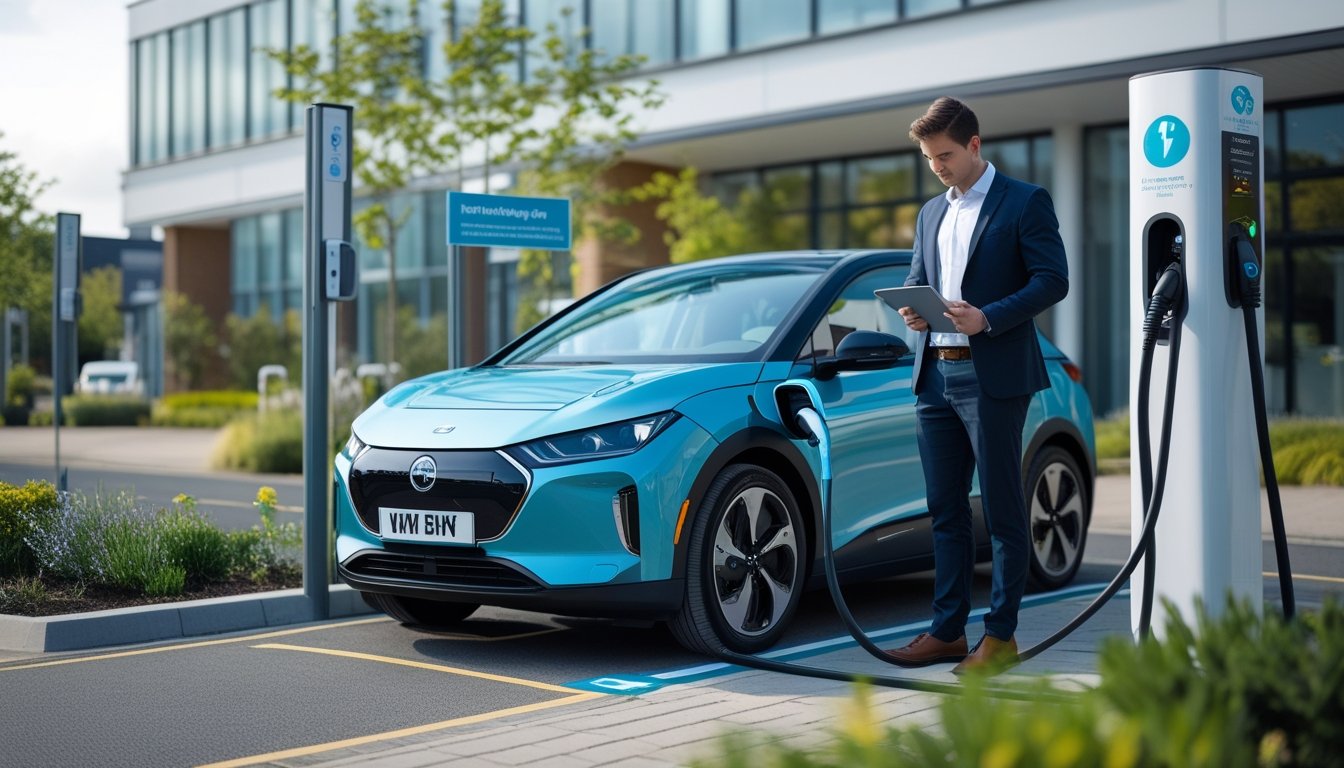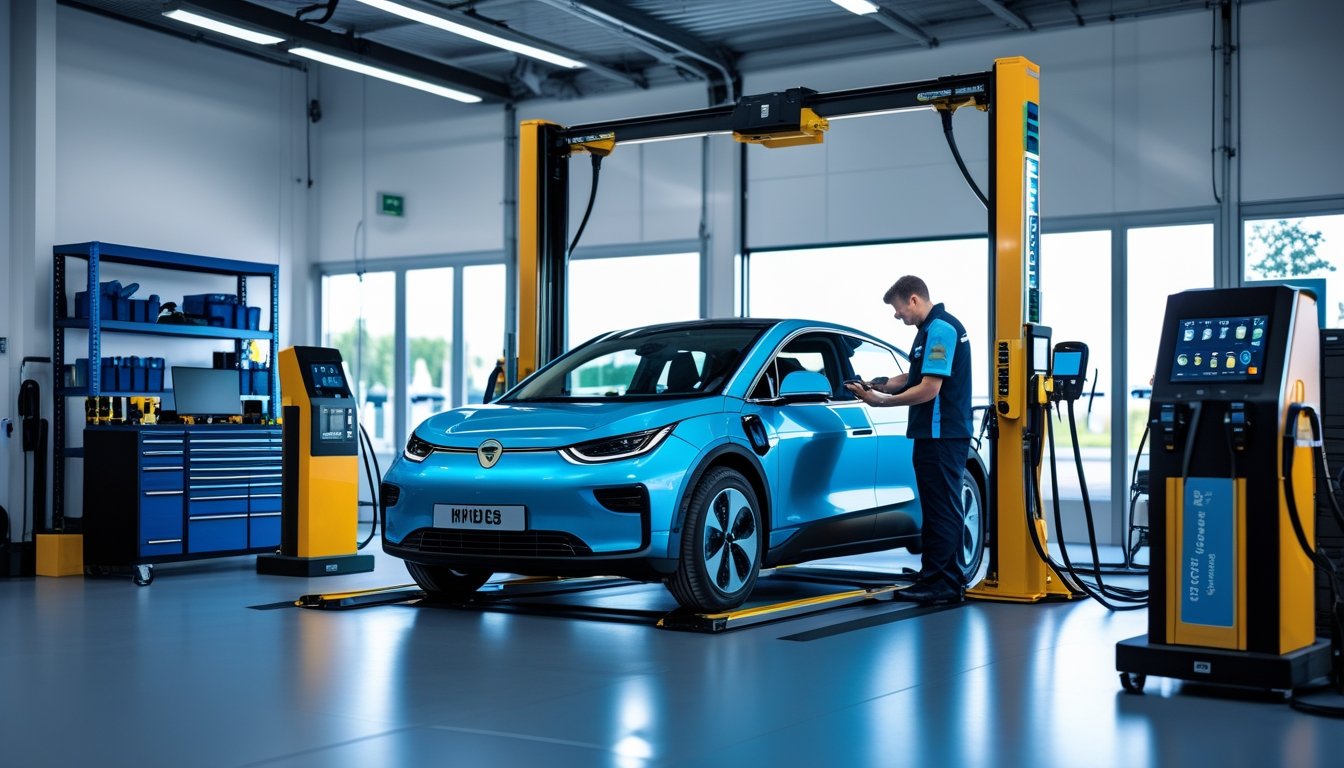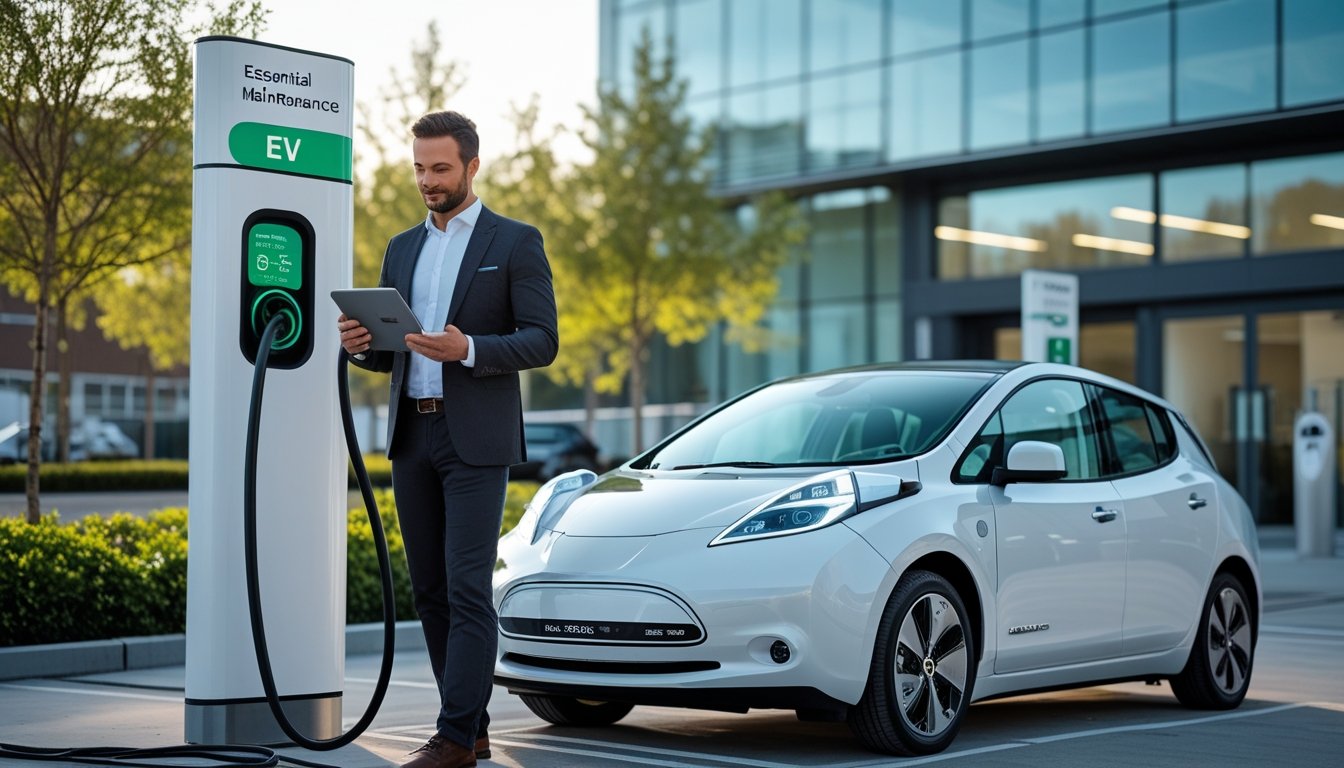Late updated: 19 Aug 2025 11:08
Written by: Amber Collins
Essential EV Maintenance Tips For UK Businesses: Ensuring Optimal Performance
Electric vehicles are rapidly becoming a staple in UK businesses, offering sustainable and cost-effective transportation solutions. Yet, maintaining these EVs is essential to harness their full benefits and ensure they run smoothly over time. Regular maintenance is key to prolonging the efficiency and lifespan of your electric fleet. This involves not only routine servicing but also ensuring that the specific needs of EVs are met.

Our focus is on providing actionable tips that cater to the unique requirements of electric vehicles in a business setting. From optimising battery health to understanding the significance of tyre and brake upkeep, our guide ensures that businesses get the most out of their EV investments. By following these practices, companies can reduce unforeseen maintenance costs, enhance vehicle performance, and support operational sustainability.
We aim to demystify common concerns about electric vehicle upkeep and offer insights into more advanced maintenance strategies. Proper management of EV maintenance can translate into significant savings and efficiency improvements for organisations. Let's explore the essential steps to keep your electric fleet in prime condition.
Key Takeaways
- Regular maintenance extends EV lifespan.
- Optimise battery, tyre, and brakes for best performance.
- Proper upkeep reduces maintenance costs.
Critical EV Maintenance Practices for UK Businesses
Ensuring the longevity and efficiency of electric vehicles in business fleets requires adherence to key maintenance practices. Prioritising battery health, efficient charging schedules, regenerative braking systems, and tyre maintenance can significantly reduce operational costs and improve fleet performance.
Battery Health and Lifespan Optimisation
The battery is the heart of any electric vehicle. To maximise its lifespan, it's essential to keep charging between 20% and 80% capacity. Fully charging or depleting batteries can accelerate wear. Regular software updates are crucial as they optimise battery performance. Furthermore, monitoring the thermal management system can prevent overheating. We should also schedule periodic battery health checks to identify potential issues early, ensuring the fleet runs smoothly.
Charging Schedule Management for Fleets
With multiple EVs, coordinating a systematic charging schedule is vital to maintain operational efficiency. Staggered charging times can help ensure that all vehicles receive adequate charge without overloading the grid or incurring excess costs during peak hours. Utilising smart charging stations and software that provides insights into optimal charging times can increase efficiency. This proactive approach not only extends battery life but also aligns with grid sustainability efforts.
Regenerative Braking System Care
Regenerative braking is a key advantage of electric vehicles, enabling energy recovery and reducing wear on traditional brake components. To maintain this system, regular inspection is necessary. Understanding the switches between regenerative and mechanical braking helps optimise this feature. Adjusting driving habits, such as anticipating stops earlier, can further enhance regenerative braking benefits. We should rely on trained technicians for maintenance to ensure safety and effectiveness.
Monitoring Tyre Pressure and Condition
Tyres play a crucial role in vehicle efficiency and safety. Maintaining the correct tyre pressure improves energy efficiency and prolongs tyre life. Fleet managers should establish routine checks using digital pressure gauges to ensure optimal levels. In addition to pressure, inspecting tread depth and looking for signs of uneven wear can prevent unexpected costs and downtime. Correct alignment and rotation are also vital practices for optimal performance.
Advanced Maintenance Considerations and Efficiency Enhancements

Ensuring electric vehicles operate efficiently requires attention to advanced maintenance areas. Key considerations include managing thermal aspects, ensuring up-to-date software, optimising battery functionality, and implementing regular inspections.
Thermal Management and Coolant Level Checks
Effective thermal management is crucial for electric vehicles as it directly impacts battery longevity and performance. Our approach involves regular checks of the coolant levels to maintain the ideal operating temperature.
By monitoring and maintaining the thermal system, we prevent overheating, which can lead to reduced battery life. Understanding the specific coolant type recommended by the manufacturer and adhering to those guidelines can prevent unnecessary wear and tear.
Having a clear schedule for coolant level checks is essential. It's advisable to integrate this with other routine inspections to ensure comprehensive vehicle health assessments. Keeping detailed records of these checks helps in identifying patterns or potential issues early.
Software Updates and System Diagnostics
Software updates enhance vehicle functionality and can often introduce improvements or new features. We need to remain proactive in carrying out these updates. Vehicle manufacturers frequently release software patches that optimise system performance and ensure the latest security protections.
Performing regular system diagnostics is equally essential. This involves using specialised tools that can assess system performance and identify any faults. Early detection through diagnostics means issues can be addressed before they evolve into costly repairs.
Additionally, ensuring that EV firmware is current enhances not just operational efficiency but also safety. Hence, incorporating scheduled software updates into the maintenance plan is highly recommended.
Optimising Battery Thermal Management
Battery thermal management is a focal point in extending an EV's lifetime and efficiency. The health of an electric vehicle battery relies heavily on maintaining an optimal temperature range to ensure performance and safety.
We can adopt liquid cooling systems to manage heat effectively. By integrating a robust thermal management system, we guard against extreme temperature fluctuations, a common culprit in battery degradation.
Practical strategies also include parking in shaded or well-ventilated areas, especially during high temperatures. Using temperature management systems in conjunction with these practices maximises battery lifespan and vehicle reliability.
Routine Inspections and Preventive Planning
Regular inspections form the backbone of any efficient maintenance strategy. Adopting a proactive maintenance plan helps mitigate potential issues early. These inspections should cover mechanical systems, electronic components, and coolant management.
Creating a schedule with predetermined inspection intervals ensures ongoing vehicle reliability. During these inspections, mechanics can identify emerging problems before they escalate, reducing downtime and unexpected expenses.
Preventive planning involves a detailed log of past inspections and services, enabling us to predict and prevent possible issues. This anticipation of future maintenance needs is pivotal in enhancing the vehicle's operational health and long-term performance.
Frequently Asked Questions

In the rapidly evolving landscape of electric vehicles (EVs), it's crucial to understand the unique aspects of EV maintenance, costs, and considerations for UK businesses. Our FAQs aim to address these essentials clearly.
What considerations are important when purchasing a pre-owned electric vehicle?
When buying a pre-owned EV, it's vital to inspect the battery health and warranty status. UK buyers should also check if the vehicle has received regular software updates and maintenance as recommended by the manufacturer.
How does the maintenance cost of electric vehicles compare to petrol cars in the UK?
Electric vehicles generally have lower maintenance costs compared to petrol cars. This is due to fewer moving parts and the reduced need for regular oil changes. Over time, businesses can expect to save on both routine service visits and operational costs.
What are the typical running costs for an electric vehicle in the UK?
Running costs for EVs can include electricity for charging, routine maintenance, and insurance. Thanks to government incentives and lower energy costs, EVs prove more economical in the UK market. Public charging infrastructure availability also helps reduce refueling expenses.
Are there specific maintenance requirements for electric vehicles at UK garages?
EVs require specific maintenance checks such as battery care, software updates, and brake inspections due to regenerative braking systems. UK garages are increasingly equipped to handle these requirements, ensuring proper servicing aligned with national standards.
Is it advisable to invest in an electric vehicle now, or should one wait for future developments?
Investing in an EV today offers benefits such as reduced emissions and lower running costs. With improvements in technology and infrastructure, making the switch can be advantageous for UK businesses looking to align with sustainable practices.
What should UK businesses consider in terms of essential maintenance for their electric vehicle fleets?
Businesses should focus on a comprehensive maintenance plan that includes regular software updates, battery health checks, and preventative measures to reduce downtime. Efficient fleet management ensures vehicles remain operational, supporting sustainability goals and cost-efficiency.
